Car-of-the-Year finalists battle to the end

Made-in-U.S. Volkswagen Passat joins Ford Focus and Hyundai Elantra as 2012 Car-of-the-Year finalists.
By John Gilbert
The most competitive battle for North American Car of the Year and Truck of the Year has boiled down to three finalists in both categories, and with time running out before the early January voting deadline, the choices are difficult.
In my 19 years on the jury, there hasn’t been another year where the field has been as balanced and diverse as this one. Unlike car magazines, which attract multi-page advertising sections, and revenue, to accompany their “car of the year†selections, the 50 independent automotive media jurors from all over North America consider our award the purest. No outside advertising or influences intrude, and we pay dues that go toward creating our very impressive sculptured award, which is presented on the first press day of the Detroit International Auto Show in January.
Candidates must be all new or significantly revised to be considered new, and the first round of votes eliminated some very strong candidates. We now have one more round of voting, after a couple of weeks, spent scurrying to get one more test-driving taste of most, if not all, of the finalists.
Car of the Year finalists, alphabetically, are:Â Ford Focus, Hyundai Elantra, and Volkswagen Passat. Truck of the Year finalists are:Â BMW X3, Honda CR-V, and Range Rover Evoque. Strong candidates, all., and they left some impressive others behind in preliminary voting. In the cars, the three finalists span North America, Europe, and Asia, with the U.S., Germany, and Korea represented in the truck battle, with two European designs and one from Japan.
When the votes were tallied, the Elantra outpointed the runner-up Passat and the Focus to win the car award, and the Evoque gave Land Rover its first victory by claiming truck honors ahead of the runner-up CR-V and the BMW X3. But here is a capsule view of all three finalists in both categories.
FORD FOCUS
Ford’s Focus is one of the corporation’s vanguards in broadening its global impact. For years, Ford built a Focus for North America and a much more advanced, sportier and more economical Focus for Europe. The previous European Focus was an exceptional car, combining all of Ford’s impressive assets, with an engine from its Mazda affiliate, the chassis structure from its Volvo brand, and chassis tuning from Ford’s German engineers. In the U.S., our Focus was a good workable compact, with a pretty good engine, pretty good design, pretty good suspension, and pretty good fuel efficiency. Those who had driven the European Focus couldn’t help but wonder why we were unable to get the “good one†over here.
In its company-wide renovation, Ford waited until it was time to redo the European Focus, and for 2012 the company is making one Focus, world-wide. So the Focus we’re getting is as good as the European version. It is made in different plants around the world, but all of them come out the same. The new car has neat styling, with either a 4-door sedan or 5-door hatchback available, and one engine, a strong 2.0-liter 4-cylinder engine with gas direct-injection turning out 160 horsepower and 146 foot-pounds of torque. Interior room and flexibility is excellent, including well laid-out instrumentation and the Ford-famous list of connectivity items starting with SYNC, about the only matter of curiosity with the Focus is in the transmission department.
The highest of high-tech companies have recently discovered the considerable advantages offered by more gears to harness engines of all sizes. The old four-speeds have long since given way to 5-speeds, and now the best ones offer 6-speeds in either manual or automatic guise. Ford made the expensive and high-tech move to build its own direct-sequential automatic, which is actually a compact, self-contained transmission, without a clutch pedal, but with two clutches inside the automatic. The unit shfits back and forth, with one clutch handling first, third and fifth, and the other second, fourth and sixth. However, Ford chose to not include steering-wheel paddles, which allow manual control of shiftpoints, and it doesn’t even offer a console manual gate option for the select lever. So the high-tech transmission lacks the ability to let drivers manually control it, which would have alleviated some sluggishness in the new automatic. Additionally, Ford stayed with a 5-speed stick, rather than 6, which forces it to run at higher RPMs at freeway speeds, and cutting into fuel economy potential.
Still, the Focus is a higher-priced economy car at a base price of $18,000, but its strong performance, excellent handling and versatile interior, plus the fact that we in North America are getting the global Focus, makes it a worthy winner.
HYUNDAI ELANTRA
The Elantra is another of those efficient cars from Hyundai before the Korean giant connected on a new high-tech engine-building scheme that clicked so well on the 2011 midsize Sonata. Since then, Hyundai has redone all its engines, including the 1.8-liter 4-cylinder in the totally renovated Elantra, which looks like a downsized Sonata. Some Hyundai insiders say the “fluidic†styling looks even better on the smaller Elantra. At 148 horsepower and 131 foot-pounds of torque, the Elantra is enjoyable to drive, and very enjoyable to occupy, with its soft and well-designed interior lines and surfaces, and supportive and comfortable seats.
The Elantra is solid and firm-feeling despite being 200 pounds lighter than the Focus at 2,721 pounds, and with either a 6-speed stick or 6-speed automatic of Hyundai’s own construction, the Elantra is as quick as the Focus and beats it on fuel-efficiency. Hyundai, which installed expensive direct-injection on both its larger and smaller 4s, and on its V6es and V8, found it could reach a legitimate 40 mpg without it on the Elantra.
Paddles are available on the sportiest Elantra, and on a recent test-drive with the option-filled Limited, without paddles, I found that by downshifting the 6-speed automatic with the shift-lever gate from sixth to fourth when exiting a freeway, the car avoided numerous hunt-and-shift downshifting in suburban traffic. A base price under $16,000 means a loaded Elantra still comes in under the Focus. Hyundai uses a lot of high-grade steel from its own steel plant, which gives the car high crashworthy grades, as well. The Elantra was introduced several months before the end of 2011, and as one of a half-dozen cars advertising 40 mpg, so many people bought Elantras it outsold all the other 40-mpg competitors 6-to-1 in its first three months on the market.
VOLKSWAGEN PASSAT
Volkswagen startled most observers when it boldly stated its intentions to become the world’s leading car maker in the next few years. One of the pivotal pieces in VW’s hope to rise to the top in the U.S. was to build a new, high-tech plant in Chattanooga, Tennessee, where its first vehicle is the 2012 Passat. The car was designed for the U.S., and is sold only in the U.S. and China, while the European Passat continues to be built for the rest of the world. The restyling is tastefully understated, and follows the lead of the smaller Jetta. VW is aiming the new Jetta directly at the compact class of Civic, Focus, Corolla, Elantra, etc., and the new Passat is tailored to challenge the Camry, Accord, Fusion, Malibu, Altima and other midsize sedans.
In that segment, the Passat rises to the top echelon by offering spacious interior room front and rear and an enormous trunk, plus a full scope of powerplants. The base Passat SE starts at a surprisingly low$20,000 with a 2.5-liter 5-cylinder with 170 horsepower and 177 foot-pounds of torque and a 6-speed automatic. The engine is not a neck-snapper for acceleration, but it revs smoothly and with a melodic sound of power, and it cruises easily while producing over 30 mpg on the freeway.
The top-end SEL can be had with the 3.6-liter VR6 engine, with 280 horsepower and 258 foot-pounds of torque, and while costing more like $30,000, it has the superlative Audi-designed DSG — direct-sequential twin-clutch automatic — leaving both the feel and power of a luxury German car costing much more. Interestingly, I attained 31 mpg on the freeway with the VR6, too. What truly sets apart the Passat from other midsize sedans is the TDI model, with its outstanding 2.0-liter turbo-diesel, and the DSG transmission. With only 140 horsepower, the TDI delivers 236 foot-pounds of torque over a flat, plateau-like curve, and it has the low-end thrust to fling the Passat away from stoplights with startling quickness, and handles mid-range acceleration burst with ease. Even better, the $33,000 TDI model will get 45 mpg or more. The story is becoming legend of a VW engineer filling his tank with diesel fuel in Seattle and driving nonstop to San Francisco — more than 800 miles — without refueling.
On the truck side, the three finalists offer even wider parameters of performance and price.
BMW X3
When BMW first ventured from sedans to SUVs with the X5, I wrote that it offered 5-Series sedan appointments and comfort, but with the ability to offer it while hurtling across and through all manner of off-road obstacles. The smaller X3 does the same thing with the 3-Series sedans, BMW’s basic trademark midsize vehicle. As refinement overtook BMW’s cars, it naturally did the same with its SUVs. In a rare stroke of logic, the Car of the Year jury’s governing body broke from its tradition to include the 2012 X3, even though it came to market as a late 2011. In numerous previous cases, excellent cars that came out too late were not only excluded from consideration, they were also excluded from the following model-year competition by being then, a year old. BMW redid the X3 for the 2011 model year, but didn’t get the vehicle out early enough, but here it is.
Probably no other engine in the world is as honored and impressive as BMW’s 3.0-liter inline 6. It powers sedans all the way up the line, and sports cars and SUVs. There are variations, including a 3.0 turbo-diesel, and the X3 gets two variations of the dual-overhead-camshaft design, and both come as “xDrive,†which is BMW’s name for its sophisticated all-wheel-drive system. The X3 xDrive28i engine is built of a unique combination of magnesium-aluminum, with Valvetronic intake technology that allows infinitely variable valve timing, putting out a very adequate 240 horsepower for the 4,200-pound X3. The X3 xDrive35i engine is all-aluminum and turbocharged, delivering 300 horsepower and 300 foot-pounds of torque. BMW’s slick 8-speed automatic transmission is just another example of how more gears, and the right transmission, can extract optimum performance and efficiency out of a superlative engine.
In normal driving, the X3 offers the high vantage point for drivers and occupants, and it corners with such a flat attitude it might be accused of simply being a taller 3-Series sedan. Basically, the X3 is what you might expect from the world’s foremost builder of sporty sedans, and with a price tag ranging from $38,000 to $43,000, standard equipment includes brake energy regeneration, BMW Assist, iPod and USB adaptors, and an anti-theft alarm system, while available items are adaptive headlights, head-up display, rear-view camera with top view, and a panoramic sunroof. German by heritage, all X3s are built in the Spartanburg, S.C., plant.
HONDA CR-V
The fourth-generation CR-V takes a dramatic upward shift in style and refinement. First introduced in 1997 and restyled for 2002, Honda’s most astute move was holding status quo with the third generation in 2007. Competitors grew larger and added V6 power, but by staying compact with two rows of seats and using only Honda’s exceptional 4-cylinder, the CR-V with its sweeping new shape became the No. 1 selling SUV in the U.S. Only Japan’s earthquake and ensuing tsunami, which cost the company 200,000 U.S.-bound vehicles in production and parts delays, allowed the Ford Escape to pass for No. 1.
The new fourth-gen CR-V has a more rigid body with a distinctive new shape from grille to taillights, with a much more futuristic appearance that holds its compact length, increases height slightly and affords considerably more interior room with a lower floor and high side glass. Connectivity — the word of the day in automotives — is everywhere in the CR-V, with the usual hands-free phone, voice-commanded alterations, the ability to read incoming text messages and relay brief responses at your command. A rear-view camera, nav system, and hill-start assist are among other features. A curious exclusion is that the connectivity works with a couple of Blackberry-type cell phones and others, but is not compatible with iPhones.
Honda altered the all-wheel drive system of the CR-V, doing away with the two-hub power distribution system for an electronic clutch that decides which axle to send increased power, up to 100 percent to one end in certain circumstances. Rear-axle power functions at start-up for better traction, disengages at cruising speed, and the system interacts with variable stability assist and the electric steering to improve stability. Available in LX, EX, and EX-L (for leather) versions, the CR-V can be ordered with front-wheel drive only, for a slight edge in fuel economy, and for a lower base price, in the $21,000 range, while upgraded stickers reach $30,000.
Honda’s 2.4-liter 4-cylinder is an excellent engine, and has been for two decades, and its 5-speed automatic is smooth-shifting and efficient, but also left behind by the 6-speeds in most competitors. Honda’s engineering spokesmen insist that reducing internal friction and altering the ratios to compensate for increased weight will add power and fuel economy. Motor Trend, in is preview edition of new SUVs, believed the hype enough to project 200 horsepower and 170 foot-pounds of torque, and guessed that a 6-speed automatic was coming. In fact, power is up only by 5, to 185 horsepower, and torque measures 163 foot-pounds, leaving the CR-V down on power and with its higher-ratio gears turning more highway revs compared to such rivals as the Hyundai Tucson, Kia Sportage, and the new-for-2013 Escape and Mazda CX-5, all of which have more power, some with turbocharging, and all with 6-speeds, to say nothing of its fellow finalists. The Evoque has a 6-speed and the X3 an amazing 8-speed. Still, the CR-V improves on its AWD and its looks and its interior accommodations, and if can hit its EPA estimates of 30 or 31 mpg it will take a run at returning to the top spot.
RANGE ROVER EVOQUE
Almost as though the futuristic auto show concept vehicle of the past couple years simply came to life, Land Rover’s Range Rover Evoque turns the staid, sophisticated and somewhat stuffy British SUV-builder down an entirely new and contemporary avenue. Instead of squarish corners all around, the Evoque retains the company’s traditional over-engineered chassis and rock-climbing abilities but fits them into the lightest and smallest vehicle in its livery. Light it may be, but no compromises have been made in solid safety, with liberal use of high-strength steel, plus cross-beam reinforcements, and lightweight aluminum roof and hood.
From the side, the roof slopes gracefully to the rear, and the new front end has a slit-eyed look to set it off. It comes in an individually tailored 2-door “coupe†version, as well as a 4-door. The 4-door is just as sleek as the 2-door, and its rear door handles are so cleverly assimilated into the pillar that you might mistake the 4 for the sportier coupe. Range Rover also has lavished a modern interior on the Evoque, with leather and wood letting you know that even if Range Rover styling and utility go off in an all-new direction, you still get the creature comforts traditional customers have come to expect.
The Evoque was recently sold by Ford to India’s Tata Motors, along with Jaguar, which is convenient, because most Range Rover models use the high-powered Jaguar V8s. But the Evoque changes directions under the hood, too, going back to Ford to purchase its newest global EcoBoost 2.0-liter 4-cylinder, which meets all of the power requirements through direct injection and turbocharging. Its 240 horsepower and 250 foot-pounds of torque allow drivers to handle any on-road challenge with sports-sedan flair, and can channel its power through the traditional terrain settings on the console that set Range Rovers apart from their competitors. A test-vehicle I drove had a base price of $41,134, and was loaded up with Oxford leather, an 825-watt Meridian surround stereo with 17 speakers, navigation, and rear-seat entertainment with two 8-inch screens, a DVD player, and wireless headphones — and listed for $56,920. At that, it is an impressive vehicle in base form, and it gave us 28 miles per gallon on a freeway trip, and it handled the winter’s first snowfall without even clicking the console selector into “snow.â€
Comments
Tell me what you're thinking...
and oh, if you want a pic to show with your comment, go get a gravatar!


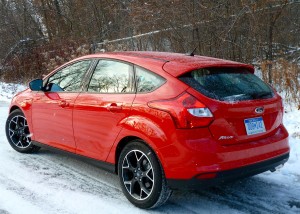
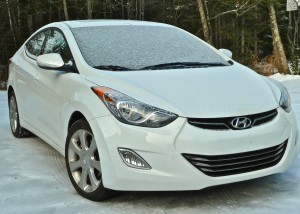
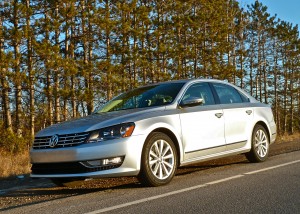
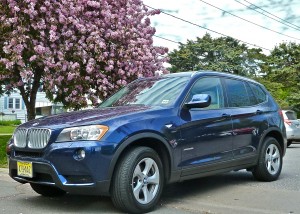
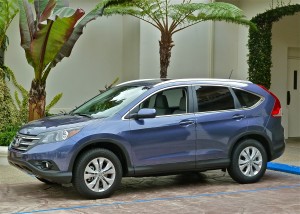
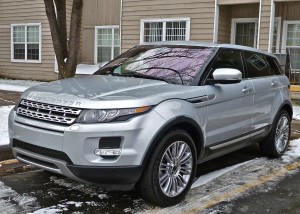
 John Gilbert is a lifetime Minnesotan and career journalist, specializing in cars and sports during and since spending 30 years at the Minneapolis Tribune, now the Star Tribune. More recently, he has continued translating the high-tech world of autos and sharing his passionate insights as a freelance writer/photographer/broadcaster. A member of the prestigious North American Car and Truck of the Year jury since 1993. John can be heard Monday-Friday from 9-11am on 610 KDAL(www.kdal610.com) on the "John Gilbert Show," and writes a column in the Duluth Reader.
John Gilbert is a lifetime Minnesotan and career journalist, specializing in cars and sports during and since spending 30 years at the Minneapolis Tribune, now the Star Tribune. More recently, he has continued translating the high-tech world of autos and sharing his passionate insights as a freelance writer/photographer/broadcaster. A member of the prestigious North American Car and Truck of the Year jury since 1993. John can be heard Monday-Friday from 9-11am on 610 KDAL(www.kdal610.com) on the "John Gilbert Show," and writes a column in the Duluth Reader.